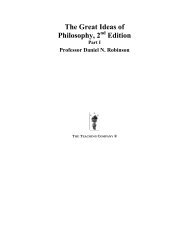Critical reflection in a TESL course: mapping conceptual change
Critical reflection in a TESL course: mapping conceptual change
Critical reflection in a TESL course: mapping conceptual change
You also want an ePaper? Increase the reach of your titles
YUMPU automatically turns print PDFs into web optimized ePapers that Google loves.
Data collection<br />
Data analysis<br />
F<strong>in</strong>d<strong>in</strong>gs<br />
Pre-<strong>course</strong> group<br />
concept map<br />
Follow<strong>in</strong>g the work of Fischer, Bruhn, Grasel, and Mandl (2002) who<br />
ma<strong>in</strong>ta<strong>in</strong> that <strong>in</strong> order to ensure greater ownership of the learn<strong>in</strong>g process,<br />
students should construct their own concept maps, rather than have a pre<strong>course</strong><br />
map prepared by the <strong>course</strong> <strong>in</strong>structor, the seven participants<br />
were each asked on the first day of class to construct a concept map<br />
concern<strong>in</strong>g the topic (‘What does teach<strong>in</strong>g English as a second language<br />
(<strong>TESL</strong>) mean to you?’) placed <strong>in</strong>side a circle with several nodes, or spokes,<br />
emanat<strong>in</strong>g straight from that circle like a bicycle wheel. These pre-<strong>course</strong><br />
maps would be used for diagnostic purposes by the <strong>in</strong>structor to gauge the<br />
extent of the participants’ prior knowledge and beliefs. On completion of<br />
the maps, the participants were asked to share their answers dur<strong>in</strong>g<br />
a peer group discussion and <strong>reflection</strong> session. At the start of the follow<strong>in</strong>g<br />
class, and <strong>in</strong> order to clarify what they placed <strong>in</strong> their concept maps,<br />
a class group discussion was conducted where the participants were<br />
encouraged to further explore their prior experiences and beliefs about<br />
<strong>TESL</strong>.<br />
On the f<strong>in</strong>al day of class, the participants were aga<strong>in</strong> asked to construct<br />
concept maps on the same topic and follow<strong>in</strong>g the same written and<br />
expla<strong>in</strong>ed directions as on the first day of class. When the participants had<br />
completed their post-<strong>course</strong> maps, they were given their pre-<strong>course</strong> maps<br />
for comparison and asked to write comments about any <strong>change</strong>s they<br />
noticed between the two maps and the reasons for these <strong>change</strong>s. Each<br />
participant was also <strong>in</strong>terviewed <strong>in</strong> order to discuss and reflect on the<br />
<strong>change</strong>s that had occurred <strong>in</strong> these maps and any further perceptions they<br />
had of the <strong>course</strong> they had just completed. In addition, I also attempted to<br />
contact each participant two years after they had taken the <strong>course</strong> to assess if<br />
they still held the same post-<strong>course</strong> beliefs about <strong>TESL</strong> (I was only able to<br />
contact two of the orig<strong>in</strong>al seven).<br />
In order to analyse the data, a keyword method was applied to the database of<br />
categories that were developed. For example, as a result of tak<strong>in</strong>g the <strong>course</strong>,<br />
onetypeofcategorythatemergedonthe concept maps <strong>in</strong>dicated that many of<br />
the participants <strong>in</strong>terpreted <strong>course</strong> concepts <strong>in</strong> terms of critical <strong>reflection</strong>.<br />
Keywords from this category <strong>in</strong>cluded ‘beliefs’, ‘teacher personality’, and ‘selfawareness’<br />
among others. Another <strong>in</strong>terpretation was research and theory<br />
and keywords from this category <strong>in</strong>cluded ‘theory acquisition’, ‘research’,<br />
‘corrective feedback’, and ‘l<strong>in</strong>k theory to practice’, among others. Each<br />
participant’smapwasanalysedasfollows:eachkeywordwasnumberedand<br />
a frequency count was noted along with any connections made to other<br />
concepts. The number of keywords from the seven <strong>in</strong>dividual maps was<br />
totalled and a pre-<strong>course</strong> group concept map was constructed after the first<br />
class and a post-<strong>course</strong> group map was constructed after the last class <strong>in</strong><br />
order to provide a visual of what the participants as a whole said they believed<br />
about <strong>TESL</strong>. In order to check for reliability of my cod<strong>in</strong>g of categories,<br />
I tra<strong>in</strong>ed two other coders and we had an <strong>in</strong>tercoder reliability of about<br />
85 per cent.<br />
The pre-<strong>course</strong> group map is shown <strong>in</strong> Figure 1. This illustrates the issues<br />
(<strong>in</strong> order of frequency) as follows: Teach<strong>in</strong>g theory/methods (6), Language<br />
learn<strong>in</strong>g/acquisition (5), Culture (4), Professional development (3), Motivation<br />
<strong>Critical</strong> <strong>reflection</strong> <strong>in</strong> a <strong>TESL</strong> <strong>course</strong> 223














